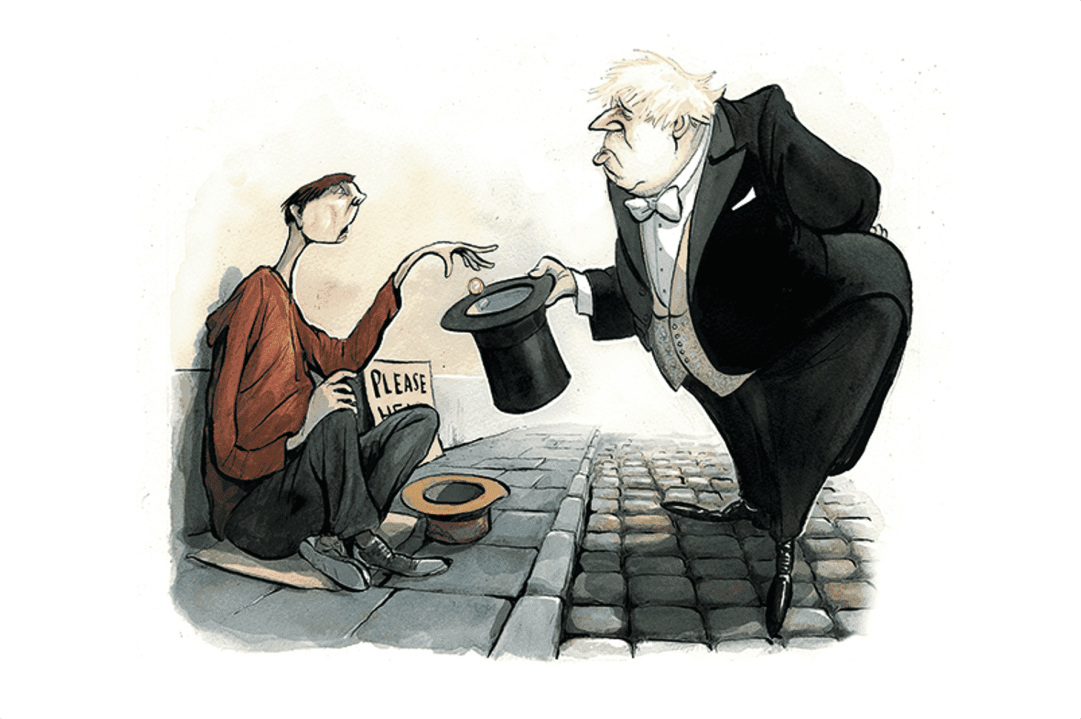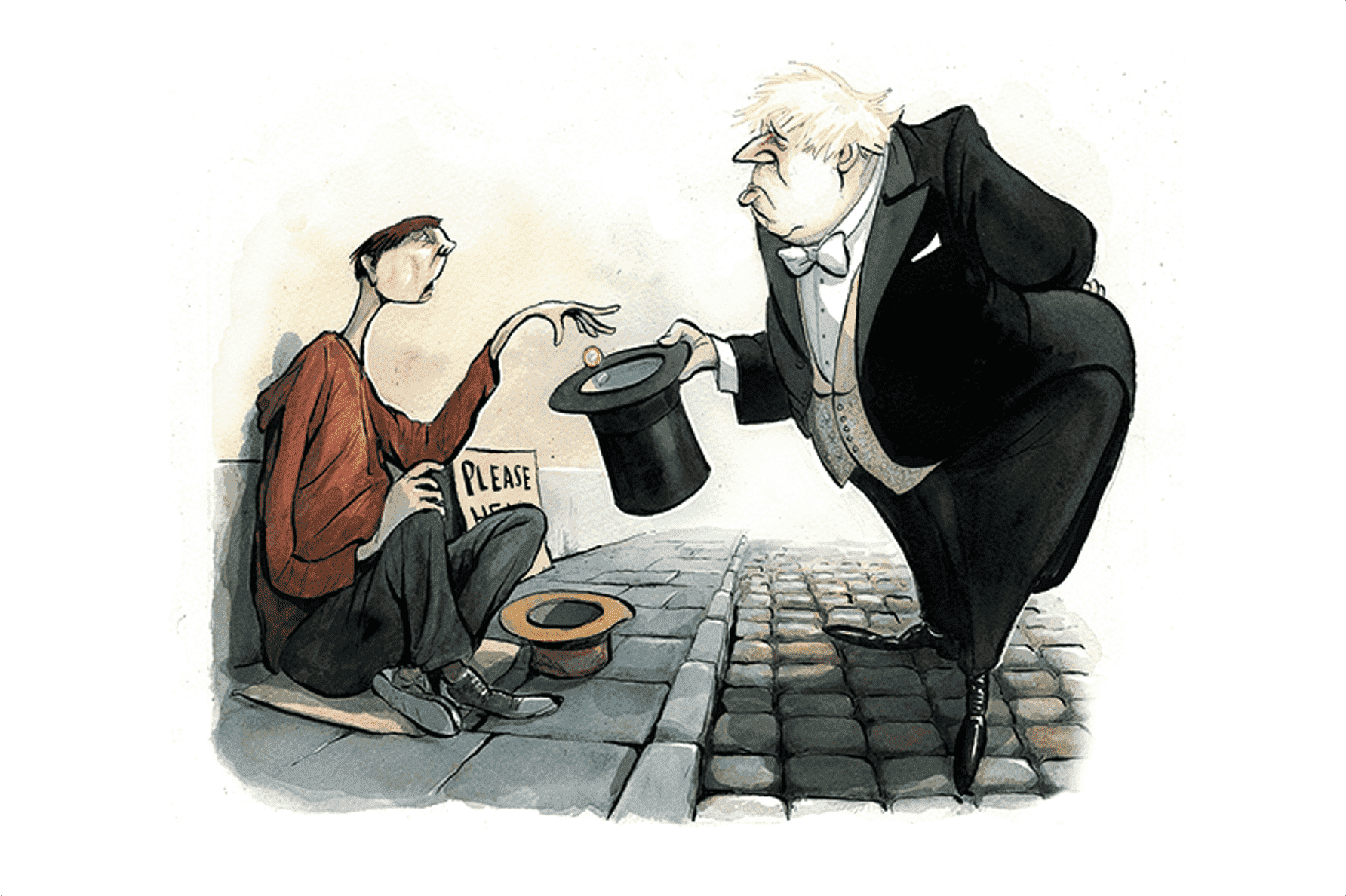‘Handouts from the state do not nurture the same sense of self-reliant dignity as a fair wage,’ says Keir Starmer in an article for the Sunday Telegraph. He’s right. Being in work is the most effective bulwark against poverty. Yet time and time again, government fairness is judged in terms of how it tweaks benefits rather than what was done to get more people into work. It’s a common belief that under the Tories, the lowest-paid were hammered and the best-paid walked away with the most.
When Tories cut benefits, it’s usually to incentivise people to move from welfare into work – and make not just them but society better off overall. That’s the theory, but what’s the results?
The single most important figure for measuring that comes from something called the Family Resource Survey, an in-depth annual study of more than 20,000 households. It measures household income after all factors (including the all-important housing costs). The red line below is, in my opinion, one of the central metrics for assessing all Conservative policies: welfare, employment and housing.
On the Daily Politics last week, I was a guest alongside the Observer’s Sonia Sodha who said the Tories had inflicted cuts on the poorest while disproportionately helping the richest between 2010 and 2024. "They effectively cut credits and funded it with tax cuts for the better off". She was referring to the impact of taxes and benefits between 2010 and 2024 . "I think that's the opposite of the truth," I replied. "I will bet you anything you like that analysis will show that the best-paid did worse and the lowest-paid did best."
I was trying to get in my counter-argument in a truncated amount of time but I was wrong to say that she was wrong. She specifically referred to the tax and benefit effect. While I disagree that tax credit cuts funded tax cuts for the rich (they were 'funded' by the extra economic growth from pro-employment reform) I should have said that the tax-benefit distributional analysis is only part of the picture. We were talking at cross-purposes.
Increasing employment was the main purpose of the post-2010 reforms, so that effect can – in my view – only be judged by factoring in earnings, housing subsidy and everything else. This is the problem for those on my side of the debate: we seek to advance fairness in an economy by replacing welfare with work in the belief that this adds not only dignity but more money. That people at the bottom will be financially (as well as socially) better off; more integrated with society. But we don't follow through, to check or publish figures asking whether this worked or not. We think the results speak for themselves. They never, ever do.
If a tree falls in a forest and no one is around to hear it, does it make a sound? That's a familiar question. I'd like to pose another: if years of agonising welfare reform leaves the poorest in society with the highest increases in income and no one ever does the maths or points this out, did it really happen? In politics, the answer is no. Something for the Tories to mull when the conduct the postmortem.
The economy of the post-crash years has been pretty miserable for most people. But during this period, the Tories did manage to make sure the biggest percentage rises in incomes went to those who needed them most. A significant point that no one will make in this election campaign.








Comments